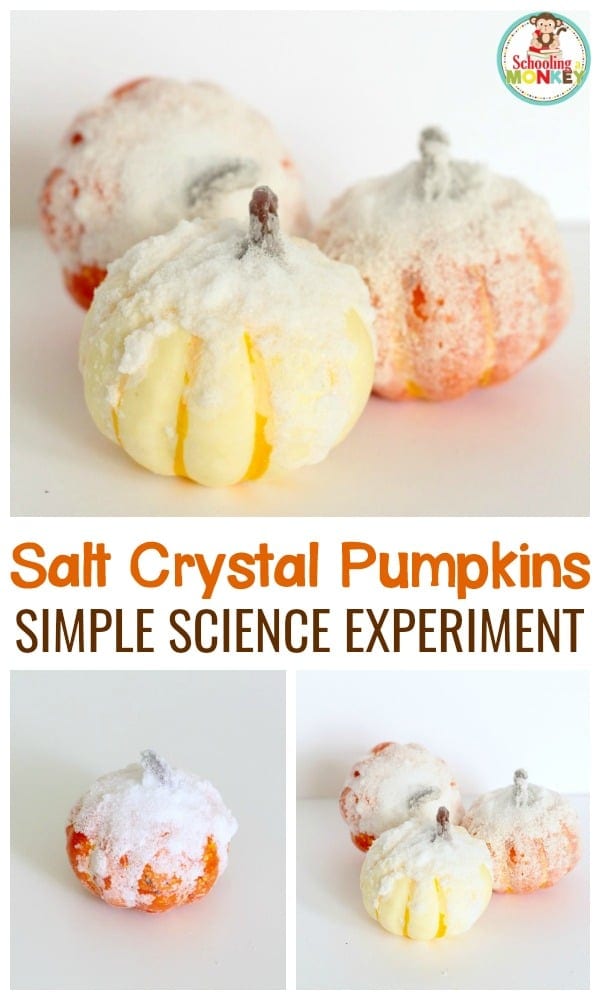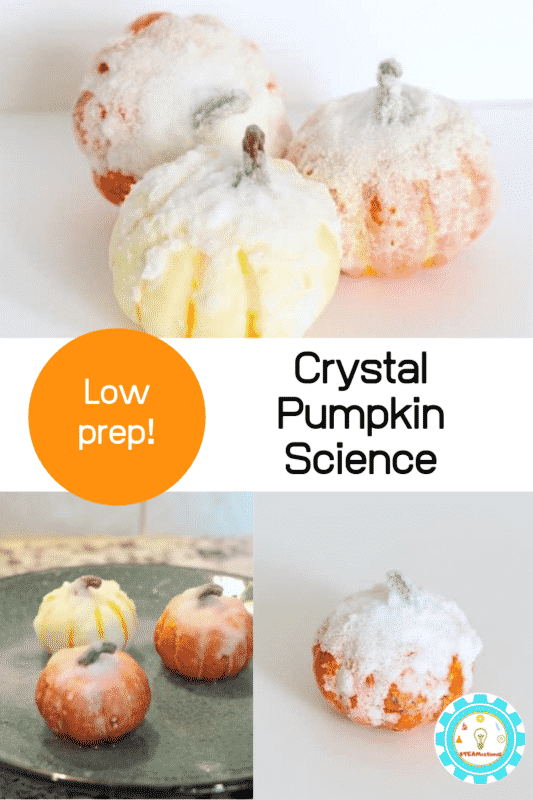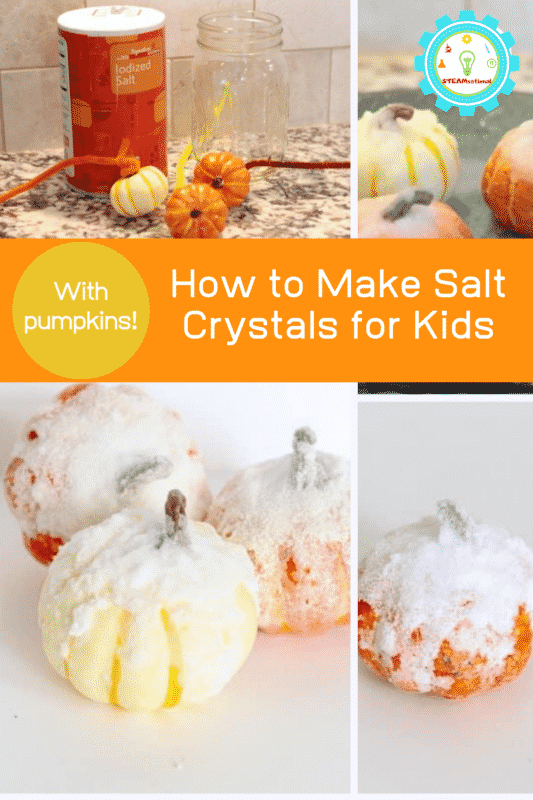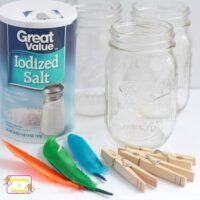Fall means pumpkins, acorns, fall leaves, and all things autumnal. Bring the science to fall when you learn how to make salt crystal pumpkins! This is one of our favorite crystal experiments for the fall.
Giving regular science experiments a fun seasonal twist is one of our favorite ways to bring science and STEM to life!

How to Make Salt Crystal Pumpkins
This particular salt crystal pumpkins science experiment is a classroom-friendly science activity that shows the basics of crystals, ionic bonds, and evaporation.
This simple activity can be the baseboard for multiple science lessons.
One of my favorite parts of teaching is creating fun seasonal learning activities for my kiddos, like how to make salt crystals for kids!

Follow along to make your own salt crystal pumpkins.
How to Make Large Salt Crystal Pumpkins
Fall STEM activities are a fun way to bring STEM activities and learning into the classroom during the fall season, mixing learning with elements of the season.
The secret to getting large salt crystals is two things. Time and amount of salt.
The more salt you add to your solution, the more supersaturated it becomes. A supersaturated solution makes bigger crystals than a solution with less saturation.
I always add enough salt to my water so that it starts to form a crystal sheet (it looks like ice!) across the surface of the boiling water.
That’s when you know that the solution has become supersaturated and will make large salt crystals.

Next, is time. The longer you leave your pumpkins in your saltwater solution, the bigger the crystals will get.
I find that about 2 days is ideal for producing the largest salt crystals. After that. most of the salt is pulled out of the water and they don’t usually get bigger.
But, you should experiment with how long you leave it in the water and see if you get the same results!
More Pumpkin Activities for Kids
Super Fun and Easy Crystal Science Fair Projects
10 Pumpkin Science Experiments for Elementary Kids
11 Books about Pumpkins for Preschool (with a STEM twist!)
Pumpkin Volcano Experiment for Kids
What is a Salt Crystal and How Do Salt Crystals Form?
A salt crystal is a grouping of salt molecules bond together through ionic bonding. Ionic bonding occurs when a positively charged ion forms a bond with a negatively charged ion and one atom transfers electrons to another.
Salt crystals form when a solution of water becomes over-saturated with salt. As the water evaporates, the salt crystals cling to one another, forming large squares of salt, just like are found in nature.
Kids will be fascinated by the ionic bonds that salt makes, creating perfect squares and rectangles every time.
What you’ll need to make large salt crystals:
This post contains affiliate links.
- Salt
- Small decorative pumpkins
- Plate
- Pot
- Stove or hot plate
How to Do the Salt Crystal Pumpkins Experiment
This fun science activity shows how salt crystals form in a fun fall-themed way. Get the printable step-by-step directions in the box below!
Salt Crystal Pumpkin Experiment Directions
Materials
- Salt
- Decorative pumpkins
- Water
- Plate
Tools
- Stove or hot plate
- Pot
Instructions
- Boil a cup of water in a small pot.
- Add enough salt so that crystals form on the surface of the water. It will look like a sheet of thin ice.
- Remove the water from the heat.
- Place your pumpkins onto a large plate.
- Pour the salt water over the pumpkins, making sure some of the salt at the bottom of the pan is left on the top of each pumpkin.
- Set the plate in a dry location and wait for a few days until the water evaporates.
- Examine the remaining crystals left on the pumpkins.
- If you've done the salt crystal leaves or salt crystal apples, compare how the pumpkins have a different appearance.
- Why would the crystals form differently under wet and dry conditions?
Recommended Products
As an Amazon Associate and member of other affiliate programs, I earn from qualifying purchases.




